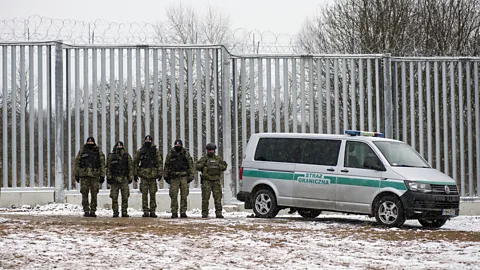Pity the tiny band of lynx in the Polish half of Europe’s most ancient forest. In June, their home, the Białowieża Forest, was cut in half when the Polish government completed construction of a wall on its border with Belarus. The aim was to repel refugees from the Middle East and elsewhere being channelled to the border by the Belarus government. But the 115-mile wall (185km) – which towers 18ft (5.5m) above the forest floor, stretching almost into the canopy above – has imprisoned migrating wildlife too.
The dozen or so lynx holed up on the Polish side of the barrier will no longer be able to hunt, feed, or breed with their more numerous fellows across the border. The wall dividing the 1,200 square-mile (3,100-sq-km) forest is expected to increase hunger among the lynx, and by limiting options for mates, decrease their already low genetic diversity.
In a letter sent in January, as work on the wall started, more than 500 wildlife scientists pleaded with the European Commission in Brussels to use its powers to halt the Polish government’s project. If construction went ahead, they said, the forest’s ecology faced “devastating consequences”, including “the collapse of the Polish lowland lynx population”.
But the wall was completed regardless. Rafał Kowalczyk of the Polish Academy of Sciences’ Mammal Research Institute, a signatory of the letter, says there is now “a high risk of extirpation” of the Polish lynx, meaning local extinction.
Seventy-four border walls currently exist across the globe, six times the number at the end of the Cold War
The Białowieża barricade is one of a rapidly growing number of walls and fortified fences, often topped with razor wire and scoured by searchlights, that are sprouting along national borders around the world. Their construction is fuelled by growing fears about cross-border migrants, terrorists, drug-smugglers and, in the case of the wall built by Ukraine between 2015 and 2022, a failed attempt to dissuade Russian armed forces from infiltrating into the east of the country.
From the swamps of Africa to the mountains of South East Asia, and from the US-Mexico border to the steppes of Central Asia, many of these barriers are appearing in remote regions that have until now been the preserves of nature. They are blocking seasonal migrations of large animals, reducing genetic and species diversity, and threatening the futures of millions of species that will need to move their domains to keep up with a changing climate.










No comments yet. Be the first to comment!